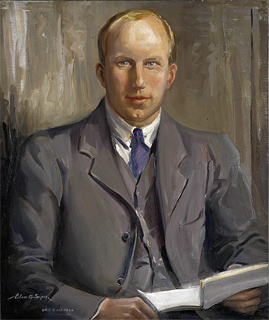With the Olympic Games just a fortnight away this week’s picture is a rare portrait of the Scottish athlete and missionary Eric Liddell. It was painted in 1925, a year after the runner’s startling victory in the men’s 400 metres at the Paris Olympics, by an artist called Eileen Soper. Known chiefly for her collaboration with Enid Blyton, whose spiffing yarns for children she was to spend much of her lifetime illustrating, Soper was only 20 when Liddell, a family friend, sat to her for his likeness. Her inexperience and relative lack of aptitude for painting in oils are reflected in the uneven quality of her picture; but although it is no masterpiece it seems to catch Liddell better than any of the surviving photographs of him, conveying both his personal intensity and his religious zeal. It was a large concession on his part to let Soper paint him, given that he was a strict evangelical Christian and a pillar of the Scottish Congregational Church, who preached against personal vanity and who disapproved of pictures (“graven images”) on religious principle. No other portraits of him exist.
Soper has painted Liddell in a moment of contemplation rather than action. He looks up from the letter in his lap, staring into the middle distance with piercing blue eyes. There is a smile on his lips but something odd about his expression too, making him seem distant, as if entranced by some vision. Otherwise the artist presents him as the consummate clean-cut heroic young man – a full grown version of the upright little chaps she was later to draw when illustrating Enid Blyton’s Famous Five stories.
Liddell’s remarkable athletic exploits, which inspired the film Chariots of Fire, were themselves determined by his unwavering religious beliefs. He had been selected for the...


